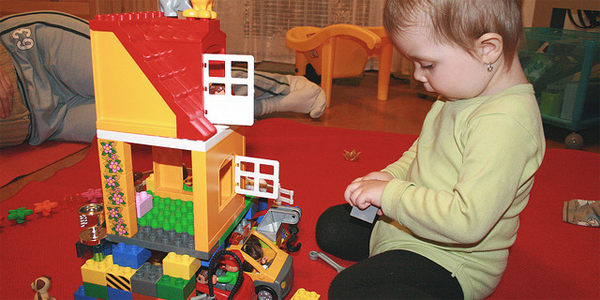
Therapy Tips
8 Tips for Special Needs Holiday Toy Shopping
As the holiday season approaches the rush to find the perfect toys for children with special needs can sometimes be a nerve-racking mission. How do you pick the right toy for your little girl or boy? Here are some guidelines to keep in mind.1. Consider Unusual Interests
Many children with special needs many not enjoy typical toys and instead may be more interested in items like fans, vacuums, or even plugs and cords. Taking their interests into consideration can give us insight into what to choose. Try and consider what aspect of an unusual item holds the child’s interest. For example, if the child enjoys linear items like cords, strings and belts, we might wish to choose toys like wands, dolls that have lots of stringy hair, or pull toys that have a rope or string attached. Toys should have meaning to each individual child. Without meaning there is no assigned value to play with that toy. “Toys should allow for the suspension of reality” (Case-Smith, 2005, pg. 573), and allow the child’s imagination to take over.2. Get Moving
Toys or games that get children moving and provide sensory input are a must from birth to two years, but are equally important throughout the lifespan. The body learns through movement and sensory experiences and the body’s skill set improves with repetition and practice. Athletic games like football, basketball, baseball, soccer, hockey, gymnastics, swimming, and horseback riding are always a positive. Movement will help produce skilled and coordinated actions. Today’s electronic gaming systems are equipped with activities that allow for either imitated movement or movement in response to changing game parameters. Toys or games that require increased physical output will also help increase overall body strength.3. Make Sense of Things
Toys should also foster sensory processing and address:- tactile (touch)
- auditory (sound)
- visual (sight)
- vestibular (movement)
- proprioception (input to muscles and joints).
- Play-Doh
- Putty
- Shaving cream
- Finger paints
- Bubbles
- Sand
- Goop/gak/slime
- Textured balls
- Gel pull toys
4. Motivate Motor Skills
Toys that promote the use of the hands and fingers are essential. Fine motor skills start to develop as an infant, gradually become more distinct leading into 18 months of age, and really start to blossom by age two to three and continuing into adulthood. There are many toys available now that put the child in the driver’s seat for building or constructing an object or structure. Examples include:- Legos
- Model cars and planes
- Robotics sets
- Electronics sets
- Arts and crafts
- Jewelry-making kits
- Coloring or painting with a brush
- Board games that require the use and manipulation of small game pieces


